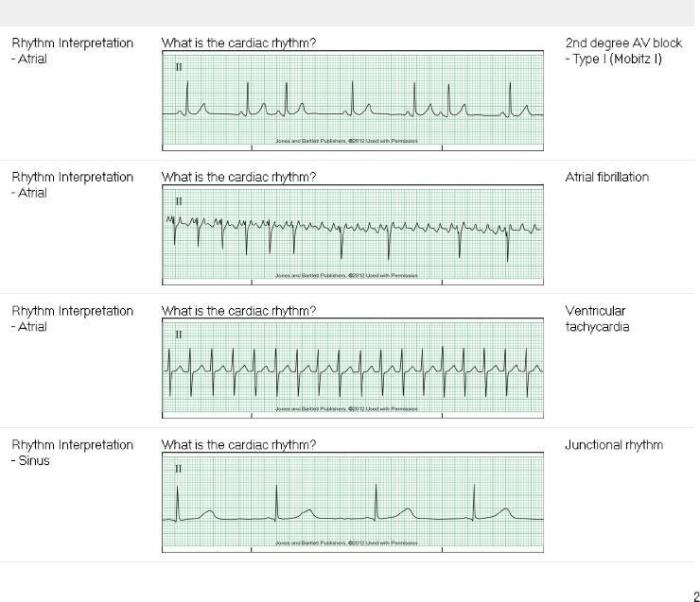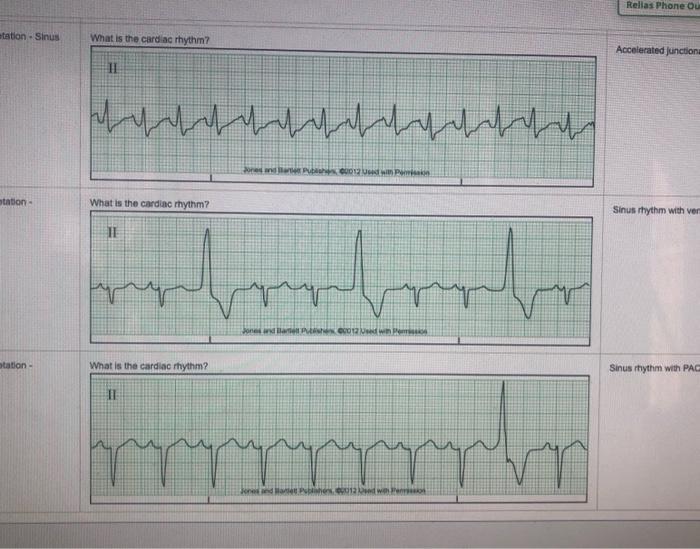Prepare for excellence with the Relias Dysrhythmia Advanced Test Answers, your ultimate guide to understanding and interpreting dysrhythmias. This comprehensive resource empowers you with the knowledge and strategies to excel in your dysrhythmia assessments, ensuring accurate diagnosis and effective patient care.
Delve into the intricacies of dysrhythmia classification, etiology, and clinical manifestations. Discover the Relias Advanced Test’s structure, content, and scoring system, equipping yourself for success. Master test-taking techniques and time management strategies to optimize your performance.
1. Dysrhythmia Basics
Dysrhythmia, also known as an arrhythmia, refers to an abnormal heart rhythm that disrupts the regular beating of the heart. These irregularities can range from minor variations to life-threatening conditions.
Types of Dysrhythmias, Relias dysrhythmia advanced test answers
Dysrhythmias are classified based on their origin within the heart:
- Supraventricular arrhythmias: Originate above the ventricles, in the atria or atrioventricular node.
- Ventricular arrhythmias: Originate within the ventricles.
- Conduction system arrhythmias: Disturbances in the electrical pathways of the heart.
Causes and Symptoms
Dysrhythmias can be caused by a variety of factors, including:
- Heart disease
- Electrolyte imbalances
- Medications
- Substance abuse
Symptoms may vary depending on the type and severity of the dysrhythmia, but common signs include:
- Palpitations (fluttering or racing heartbeat)
- Dizziness or lightheadedness
- Chest pain
- Shortness of breath
2. Relias Dysrhythmia Advanced Test

The Relias Dysrhythmia Advanced Test is an online assessment tool designed to evaluate healthcare professionals’ knowledge and skills in diagnosing and managing dysrhythmias.
Purpose and Benefits
- Assess competence in dysrhythmia interpretation
- Identify areas for professional development
- Enhance patient care and safety
Test Format and Content
- Multiple-choice questions
- Case studies
- ECG interpretation scenarios
The test covers a wide range of dysrhythmia topics, including:
- Supraventricular arrhythmias
- Ventricular arrhythmias
- Conduction system arrhythmias
- Pharmacology and treatment strategies
3. Test Preparation Strategies

To prepare effectively for the Relias Dysrhythmia Advanced Test, consider the following strategies:
Study Materials and Resources
- Dysrhythmia textbooks: Comprehensive resources covering the pathophysiology, diagnosis, and management of dysrhythmias.
- ECG interpretation guides: Essential for understanding ECG waveforms and recognizing different arrhythmias.
- Online resources: Numerous websites and apps provide interactive exercises, practice tests, and educational materials.
Practice Techniques and Strategies
- Regular review: Dedicate time to reviewing dysrhythmia concepts and ECG interpretation.
- Practice ECG interpretation: Analyze real-world ECGs to develop pattern recognition skills.
- Attend workshops or webinars: Seek professional guidance and engage in interactive learning experiences.
4. Test Taking Tips: Relias Dysrhythmia Advanced Test Answers

General Test-Taking Tips
- Manage time effectively.
- Read instructions carefully.
- Eliminate obvious incorrect answers first.
- Guess intelligently if unsure.
Specific Dysrhythmia-Related Strategies
- Understand the pathophysiology: Comprehend the underlying mechanisms of each dysrhythmia.
- Analyze the ECG: Identify key features such as P waves, QRS complexes, and T waves to differentiate between arrhythmias.
- Consider clinical context: Assess patient history and symptoms to support your diagnosis.
Time Management Techniques
- Prioritize questions: Tackle the most challenging or time-consuming questions first.
- Use the process of elimination: Narrow down answer choices by identifying incorrect options.
- Don’t dwell on difficult questions: Move on and return to them later if time permits.
5. Interpreting Test Results
The Relias Dysrhythmia Advanced Test results are presented as a score range. Different score ranges indicate the level of competence in dysrhythmia interpretation:
Implications of Score Ranges
- Advanced proficiency: Demonstrates a high level of knowledge and skills in dysrhythmia management.
- Proficient: Meets the expected standards of dysrhythmia interpretation.
- Needs improvement: Indicates areas where further development is necessary.
Using Results for Professional Development
- Identify strengths and weaknesses.
- Develop a personalized learning plan.
- Seek additional training or resources to improve knowledge and skills.
Frequently Asked Questions
What is the purpose of the Relias Dysrhythmia Advanced Test?
The Relias Dysrhythmia Advanced Test assesses your knowledge and skills in interpreting dysrhythmias, ensuring proficiency in this critical aspect of cardiovascular care.
How do I prepare for the Relias Dysrhythmia Advanced Test?
Utilize the study materials and resources provided by Relias, engage in practice questions, and seek guidance from experienced clinicians.
What are the benefits of taking the Relias Dysrhythmia Advanced Test?
The test validates your expertise in dysrhythmia interpretation, enhances your professional credibility, and demonstrates your commitment to providing high-quality patient care.
